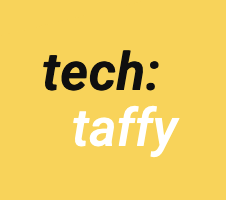Generative Adversarial Networks (GANs) are a class of machine learning models consisting of two neural networks: the generator and the discriminator. The generator network learns to produce synthetic data, such as images, while the discriminator network distinguishes between real and generated data. Through an adversarial training process, these networks compete and learn from each other, driving the generation of increasingly realistic outputs.
Key components of GANs
Generator network: The generator network takes random noise as input and generates synthetic data samples. By learning from the training data, the generator network gradually improves its ability to produce data that closely resembles the real data distribution.
Discriminator network: The discriminator network aims to classify data samples as real or generated. It learns to distinguish between real data and the synthetic data produced by the generator. The discriminator provides feedback to the generator network, helping it refine its generation process.
Adversarial training: GANs employ an adversarial training approach where the generator and discriminator networks compete against each other. As the generator generates increasingly realistic outputs, the discriminator becomes more adept at identifying generated data. This iterative process leads to the development of a generator capable of producing highly convincing synthetic data.
Applications of GANs
Image synthesis: GANs have demonstrated remarkable success in generating realistic images. They can be used to synthesize new images with desired attributes, create photorealistic artworks, and assist in data augmentation for training machine learning models.
Video and animation: GANs extend their generative capabilities to the domain of video and animation. They can generate realistic video sequences, alter facial expressions in videos, and even animate inanimate objects.
Data augmentation and simulation: GANs provide a valuable tool for data augmentation, enhancing the diversity and size of training datasets. By generating additional synthetic data samples, GANs can improve the robustness and generalization of machine learning models. Furthermore, GANs facilitate the simulation of complex scenarios, enabling virtual environments for testing and training autonomous systems.
Content generation and design: GANs can be employed to generate text, music, and other forms of creative content. They enable the synthesis of novel text passages, music compositions, and design prototypes, fostering innovation and creativity in various industries.
Challenges and considerations of GANs
Training instability: Training GANs can be challenging due to their inherent instability. Achieving a balance between the generator and discriminator networks is crucial, as an overly powerful discriminator can hinder the generator’s learning progress. Techniques such as architectural modifications, regularization methods, and alternative loss functions address this challenge.
Mode collapse: GANs may suffer from mode collapse, where the generator gets stuck producing limited varieties of outputs. To mitigate this, researchers explore techniques such as minibatch discrimination, curriculum learning, and incorporating diversity-promoting mechanisms into the training process.
Ethical implications: As GANs gain more capabilities in generating realistic content, ethical considerations arise. Issues like intellectual property rights, the potential for creating deceptive content, and privacy concerns require careful attention and thoughtful regulation.
Data bias and fairness: GANs learn from existing datasets, which may contain inherent biases. Care must be taken to ensure fairness and prevent the amplification of biases during the generation process. Regular monitoring, diverse training data, and bias-correction techniques can address these concerns.
The future of GANs holds promising opportunities for further advancements. Ongoing research focuses on refining training stability, developing techniques for controlling generated outputs, and exploring GANs’ potential in areas such as medicine, education, and virtual reality.
